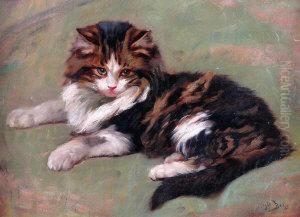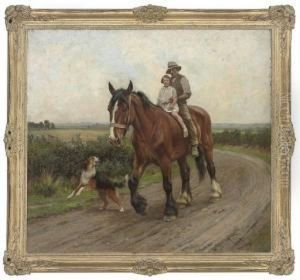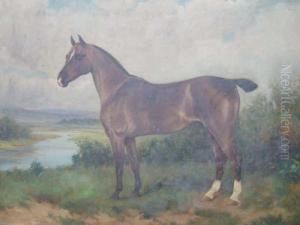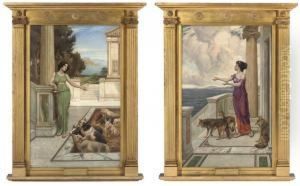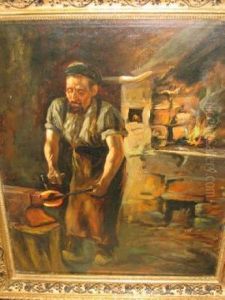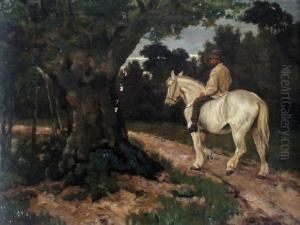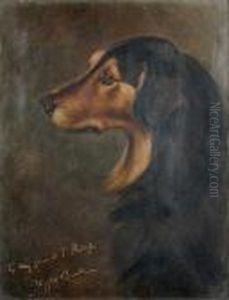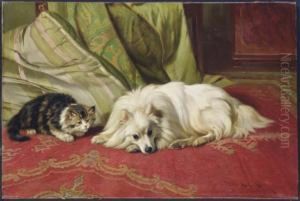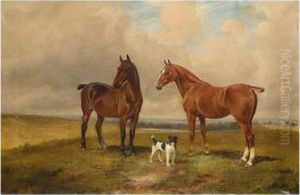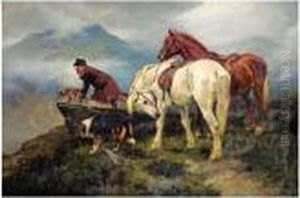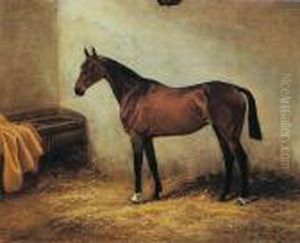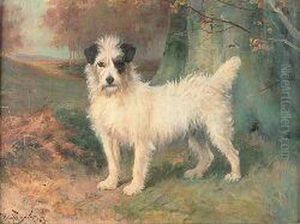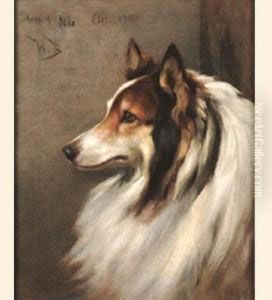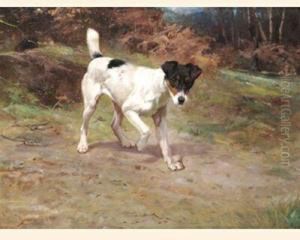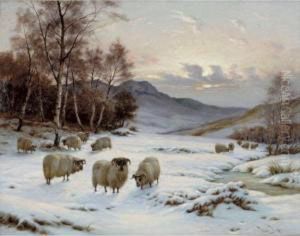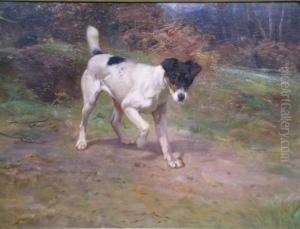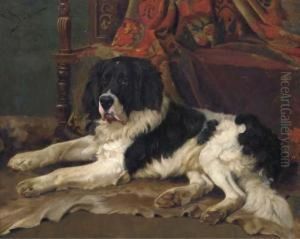Wright Barker Paintings
Wright Barker was an English painter known primarily for his depictions of rural scenes and animals, particularly dogs and horses. Born in Bradford, West Yorkshire, in 1864, he began his artistic career as a porcelain painter before transitioning to canvas. His talent for capturing the essence and personality of animals, especially sporting and hunting dogs, garnered him significant recognition.
Barker received his formal art education at the Royal College of Art in London. He was greatly influenced by the work of Sir Edwin Landseer, a well-known painter of animals, and often drew inspiration from the English countryside. Throughout his career, Barker exhibited at various institutions, including the Royal Academy and the Royal Society of British Artists. His paintings often featured the landscapes of Yorkshire and the Scottish Highlands, places he frequently visited to capture the natural beauty and the sporting life associated with them.
His works were characterized by a realistic style and a keen attention to detail, which brought his subjects to life on the canvas. Barker's paintings resonated with the Victorian and Edwardian society's fascination with nature and animals, making him a popular artist during his lifetime.
Despite his success, Wright Barker remains a relatively lesser-known figure in the art world today. His works, however, continue to be appreciated by collectors and enthusiasts of animal and rural paintings. Barker's contribution to British art is a testament to his passion for the natural world and his ability to portray it with both accuracy and artistic sensitivity. He passed away in 1941, leaving behind a body of work that continues to be celebrated by those who admire traditional British landscape and animal painting.








